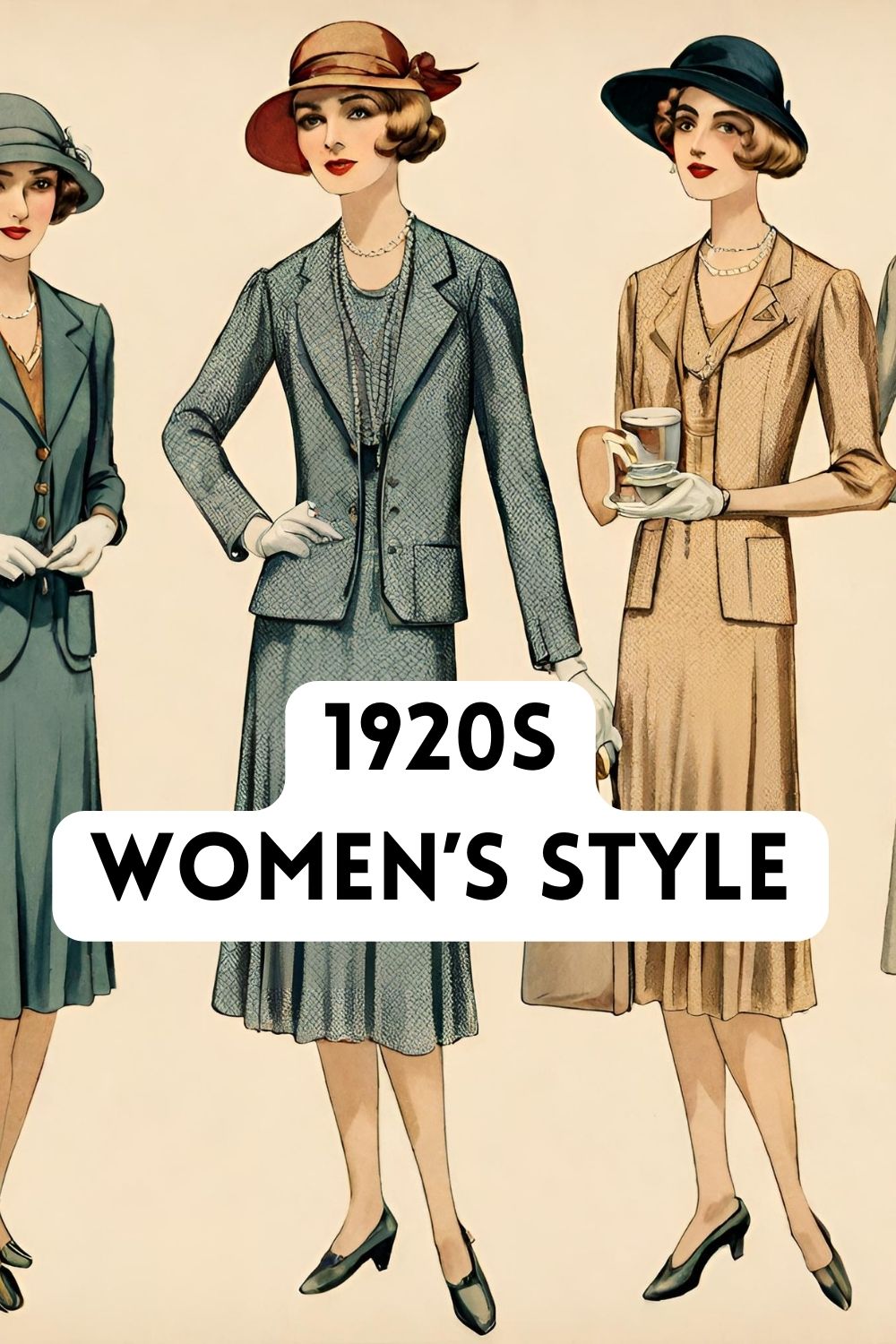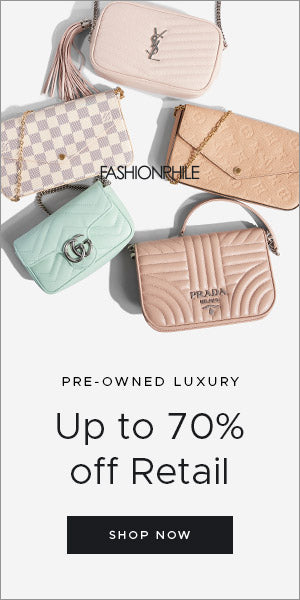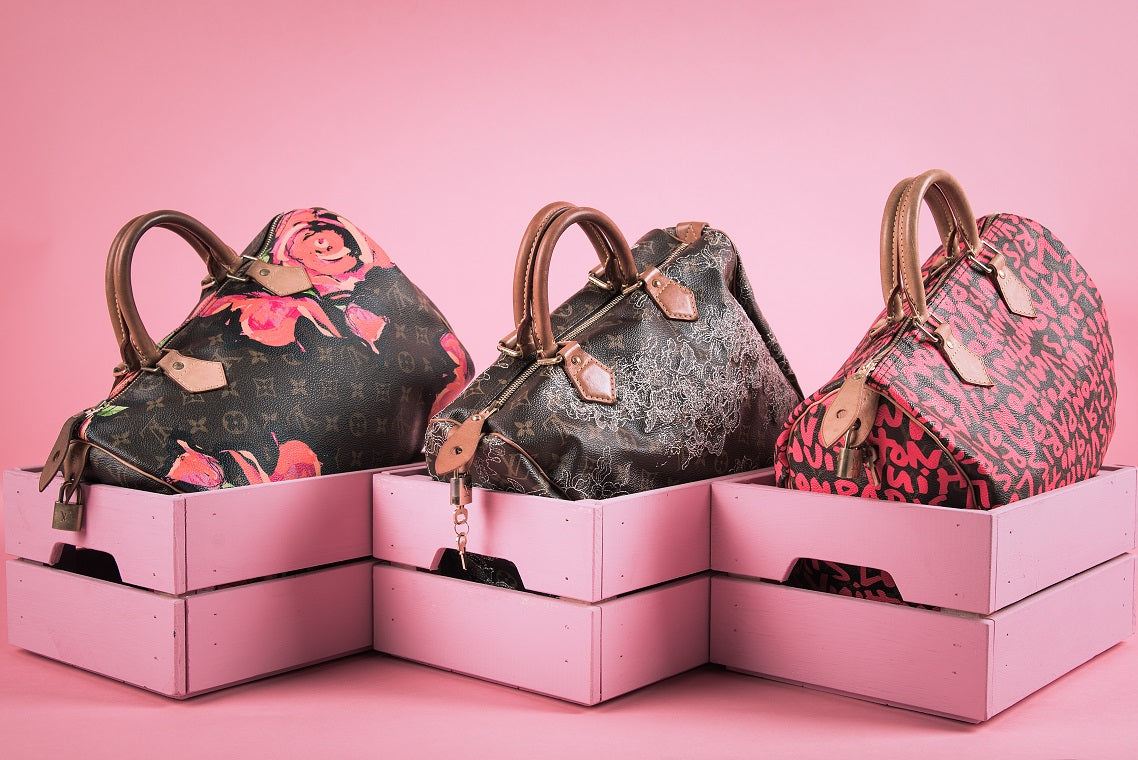
The Roaring Twenties heralded an era of unmatched style transformation.
Yet, the quest for authenticity in vintage fashion often leads to bewildering replicas, diluting the essence of the original 1920s aesthetic.
Grasping the nuances of the decade's sartorial elegance requires a discerning eye—distinguishing between an outfit that merely mimics the past and one that vibrantly revives the spirit and sophistication of true vintage attire.
Impeccable execution is paramount.
Defining the 1920s Aesthetic

The quintessence of 1920s fashion is marked by the celebration of liberation and modernism. Women’s flapper dresses, replete with beaded embellishments and fringed hemlines, became icons of the era, epitomizing a shift toward less restrictive silhouettes and a bold dismissal of previous fashion tenets. Similarly, men's attire evolved towards well-tailored suits that exuded a mix of casual elegance and urbane sophistication, complemented by accessories such as fedoras and pocket watches. This decade's fashion was more than mere clothing; it was a progressive statement reflecting broader societal shifts.
For those seeking to authentically replicate 1920s attire, it is imperative to appreciate the era's intricate balance between ornate adornment and refined simplicity. Jewelry and embellishments were not mere afterthoughts but were integral to achieving the authentic flapper look, with long pearl necklaces and cloche hats serving as defining accessories. These elements combined to project an aura of poised elegance that is paramount in recreating the genuine charm of the roaring twenties.
Flapper Dresses Redefined
The 1920s flapper dress, symbolic of rebellious youth, transcended mere fashion to become emblematic of societal liberation.
In its essence, the flapper dress encapsulated an era defined by dramatic social and stylistic transformation.
Bold geometric patterns and sequin overlays not only symbolized modernity but also conveyed the era's zest for life and break from convention, making them quintessential to the flapper aesthetic.
The hallmark of these dresses—a straight silhouette that flouts the restrictive corsetry of the past—ushered in a new epoch of comfort and freedom, propelling women's fashion into a realm of unprecedented self-expression.
The Dandy Gentleman Essentials
Embracing the 1920s' elegance requires fastidious attention to the quintessential attire favored by the dandy gentleman of the era.
Key to this look: the immaculate three-piece suit, meticulously tailored to perfection.
A crisp, white broadcloth shirt with a detachable collar provides a pristine canvas for the gentleman's expressive sartorial choices, crowned by a signature bow tie or Ascot necktie, indicative of a man of distinction.
The ensemble's pièce de résistance lies in the details: cufflinks and pocket squares exude sophistication, while a felt fedora or a silk top hat underscores the ensemble's understated opulence; oxford brogues or patent leather shoes complete the polished aesthetic.
Accessories That Made the Roaring Twenties
The Roaring Twenties were defined by a distinctive accessory palette, characterized by opulence, bold geometric forms, and a touch of whimsy, embodying the era's spirit of liberation and creativity.
Beaded clutch purses were quintessential to complete the flapper ensemble.
Art Deco jewelry, with its symmetrical design and exotic influences, amplified the period's fascination with modernity and the machine age.
Pearl necklaces, often layered, served as the embodiment of twenties' glamour, whispering of luxury and femininity.
Elaborate headpieces, such as bejeweled bandeaus or feathered headbands, became icons of 1920s fashion, infusing outfits with an air of drama and a nod to the prevailing Orientalism that influenced aesthetics of the time.
In their hands, elongated cigarette holders not only became a symbol of societal transformation, but also an accessory that conveyed the rebellious sophistication of the 'nouveau chic'.
Coveted wristwatches, often ornate and embellished, spoke not just of affluence, but also mirrored the era's progressive embrace of technology and the newfound cultural importance of punctuality.
Fabrics and Patterns of the Era

The 1920s sartorial landscape was a tapestry of innovation and respect for tradition, manifested through the utilization of luxurious materials and intricate designs. Fabrics such as silk, velvet, and chiffon were pivotal, offering a sumptuous canvas that allowed for the dynamic interplay of texture and light, embodying the era's allure and opulence. Patterns, meanwhile, gave life to the Art Deco movement's influence on fashion, with geometric shapes and angular lines becoming emblematic of the time. There was a harmonious blend of the bold, with striking chevrons and lavish floral motifs, and the subtle, with understated pinstripes or polka dots, creating a rich visual dichotomy reflective of the period’s diverse stylistic inclinations.
Decoding the 1920s Textile Palette
The palette of the 1920s was an intriguing mélange, reflecting a period both dynamic and transitional in nature.
In texture and shade, this era's fabrics narrated a story of societal evolution and sartorial audacity. Textiles were imbued with deep, luscious jewel tones, metallic sheens, and softer pastel hues, each signifying different facets of the decade's spirit. There was a nuanced calibration of color, balancing vibrant excess with refined sobriety—analogous to the societal shifts between the Roaring Twenties' exuberance and the era's more traditionalist aspects.
Significantly, colors were not used indiscriminately. Rather, they were carefully selected to create striking ensembles reflecting the era's creative ethos. Black became a stalwart for its elegance, while silver and gold tones added a touch of modernity, resonating with the metallic accents in Art Deco architecture. The strategic use of color was instrumental in delineating day from evening wear, and in designating the seasonal shifts fashionably captured through varying shades.
The discerning choice of a color palette was pivotal in capturing the zeitgeist of the 1920s—conjuring impressions of opulent ballrooms, spirited jazz clubs, and the emergent cosmopolitan lifestyle. This strategic selection of hues and shades was not merely for aesthetic pleasure, but also a visual lexicon mapping the social, technological, and cultural revolutions of the time, allowing future generations to seize a vivid snapshot of this iconic era through its textiles.
Signature Prints of the Jazz Age
Contrasting textures created striking visual dynamics.
The Jazz Age represented an era of dramatic social change, which was also reflected in the textiles and patterns of clothing. Innovative printing techniques afforded the opportunity to experiment with bold geometrics, symmetrical designs reflective of the Art Deco movement, and exotic motifs inspired by the fascination with faraway cultures. Consequently, fabrics became canvases of societal expression and aesthetic innovation.
Prints were celebratory expressions of the epoch’s vitality.
Attention to detail was paramount in these patterns; each line and curve mattered. Precision in design - often machine-inspired - became synonymous with the period. Innovations in screen-printing technology allowed for the mass production of such intricate, awe-inspiring patterns.
Inspired by the contemporaneous rise in global travel and cultural exchange, these designs often featured rich colors and intricate patterns. It wasn't just the print that mattered but the storytelling that accompanied each textile, encapsulating the wanderlust and curiosity of the 1920s that continued to influence the fashion landscape well into the year 2023 with enigmatic collections echoing the compelling narrative tapestry of this pivotal period.
Occasion-tailored Vintage Ensembles
For intimate soirées, silk charmeuse slip dresses evoke the subtle poise of '20s private gatherings, while embellished accessories heighten the finesse. In contrast, grander settings demand the opulence of fully sequined gowns, harmonizing with the vibrant jazz-infused atmospheres that characterize '20s public festivities. The tiered beaded fringe of a flapper dress not only encapsulates the era's unrestrained spirit but also serves as a kinetic adornment that animates with every step.
When it's time to step outdoors, the decade's daywear aesthetic offers tailored woolen coats paired with cloche hats, imbuing a sense of elegance into the crisp air. For leisure pursuits, the knitted sweater vests and pleated skirts reference an awakening in female sporting fashion, equipped for the tennis courts or a pleasurable jaunt in an open-top automobile.
The quintessential "tea gown" becomes the epitome of afternoon refinement, while "dinner attire" signifies a transition into night's sophisticated glamour.Embarking on the journey of creating a truly authentic 1920s outfit requires not only a discerning eye for period-specific details but also an awareness of the social mores and event-appropriate codes of that bygone era.
Daytime Sophistication: Tea Dresses and Suit Sets

In the 1920s, tea dresses exemplified daytime elegance, meticulously crafted from fine fabrics with delicate embroidery or lace.
- Select a Drop-Waist Tea Dress: Characteristic of the era, drop-waist designs elongate the silhouette, often adorned with subtle embellishments.
- Incorporate Pastel or Floral Patterns: Suggesting a soft, feminine aesthetic, these patterns were highly popular for daytime engagements.
- Accessorize with T-Strap Shoes: The iconic T-strap heel was both fashionable and functional, perfect for an afternoon soirée.
- Adorn with Simple, Refined Jewelry: Pearl necklaces or understated brooches were the jewelry pièces de résistance, complementing without overpowering.
- Top with a Wide-Brimmed Hat or a Cloche: Protection from the sun was stylishly met with wide-brimmed hats, while the snug cloche hat offered a more modern look.
Suit sets for women, tailored to perfection, made a distinct statement with sharp lines and a focus on fit and fabric.
To complete the ensemble, attention to detail is paramount; each accessory should be thoughtfully chosen to echo the grace of the time.
Evening Elegance: Beaded Gowns and Tuxedo Lines
For the 1920s soirée, the quintessence of opulence was found in the Beaded Gown's shimmering facades and Tuxedo's crisp silhouettes. They represent the apogee of eveningwear, with each bead and seam imparting sophistication.
Art Deco influence is unmistakable in geometric beading, exuding luxurious excess. Tuxedo styling introduced clean, uninterrupted lines to womenswear.
The Beaded Gown's splendor lies in its ornate attention to detail; elements of sequins, crystals, and glass beads interwork to narrate an era's affinity for decadence and flair. For men, the Tuxedo upheld sartorial precision with its timeless contours and satin accents, emerging as a bastion of classical formality.
Adopting these evening garments isn't merely about wearing an outfit; it's an act of embodying a historical narrative, where each beaded thread weaves tales of Jazz Age soirées, and every Tuxedo line reverberates with the echoes of Prohibition-era sophistication. They are not just accoutrements but vessels of a rich social tapestry that defined an age of elegance.
Modern Twists on 1920s Classics
Invigorating time-honored pieces with contemporary flair, today's fashion embraces the opulent aesthetics of the 1920s and infuses them with modern sensibilities. Enhancements such as laser-cut detailing and high-tech fabrics reimagine the quintessential beaded gown and tuxedo, ensuring their place in the pantheon of present-day elegance.
The fusion of vintage charm with current trends presents a dynamic landscape for the sartorially savvy. Beaded gowns now sport sleek silhouettes, and tuxedos are being tailored with adventurous fabrics, signifying a harmonious blend of past and present couture.
Integrating Vintage Pieces with Contemporary Style
Fashion is cyclical, with historical nuances reborn anew.
In the sartorial dance of time, vintage 1920s pieces present a unique charm. When paired thoughtfully with current fashion norms, they make for striking ensembles that bridge decades. Consider anchoring an outfit with a singular vintage piece, such as an opulent beaded dress or a classic waistcoat. These elements, while inherently of their time, can enliven the zeitgeist of contemporary fashion when thoughtfully integrated with modern accents.
Minimalism enhances, never overshadows, vintage splendor.
Choose accessories that echo the vintage era - silk scarves, elegant gloves, or art deco jewelry add finesse without detracting from the garment's own historical narrative. This allows the vintage piece to shine while subtly acknowledging the evolution of fashion.
The narrative of the past melds with the aesthetic of the present.
When blending vintage and modern elements, focus on balanced interactions. Consider the silhouette, textures, and color palette of the outfit. Harmonizing these aspects allows the vintage 1920s items to integrate seamlessly into a contemporary wardrobe, creating a look that respects both the richness of the past and the sleek simplicity of 2023's fashion landscape. These integrations showcase a sophisticated understanding of style, offering an individualized narrative that transcends the boundaries of time.
1920s Inspired Looks for Today’s Fashion
Embrace the opulence of the 1920s with precision by selecting key statement pieces reflective of the era's design ethos, such as beaded flapper dresses or structured cloche hats.
Highlight authenticity with careful ornamentation; think strands of pearls or geometric art deco cufflinks to accentuate the ensemble.
To navigate this historic aesthetic in today’s context, blend traditional fabrics like silk and velvet with modern cuts. Aim for a synergy of vintage glamour and contemporary sophistication that honors the timeless elegance of the 1920s.
Adopting the Gatsby-esque allure necessitates meticulous attention to details that define the decade. Layer textures, integrate metallic accents, and consider silhouette fluidity to ensure the outfit exudes the extravagance associated with the Roaring Twenties, yet remains grounded in today's fashion sensibilities. Whether for a themed event or simply a nod to "vintage" in everyday attire, the essence of the era can be beautifully reimagined.
Were there any influential fashion designers in the 1920s?
Absolutely! The 1920s saw the rise of several influential fashion designers who played a significant role in shaping style and trends of the era. One of the most prominent designers of the time was Coco Chanel. Known for her timeless elegance and modern approach to fashion, Chanel revolutionized women's clothing by introducing comfortable and liberating designs. She popularized the little black dress, the Chanel suit, and the use of jersey fabric in high fashion.
Another influential designer of the 1920s was Jean Patou. He was known for his sporty and chic designs, which were a stark contrast to the elaborate and restrictive fashions of the previous decade. Patou introduced innovative styles such as the cardigan, the tennis skirt, and the knitted swimwear.
Paul Poiret was also a key figure in 1920s fashion. He embraced the Art Deco movement and incorporated bold colors and exotic influences into his designs. Poiret is often credited with liberating women from corsets and introducing more relaxed and comfortable silhouettes.
Elsa Schiaparelli, an Italian designer who made a name for herself in Paris, was another influential figure of the decade. She was known for her avant-garde and surreal designs, incorporating elements such as lobster motifs and shoe-shaped hats. Schiaparelli's bold and imaginative approach to fashion challenged traditional norms and continues to inspire contemporary designers.
These designers, among others, played a pivotal role in shaping the fashion landscape






